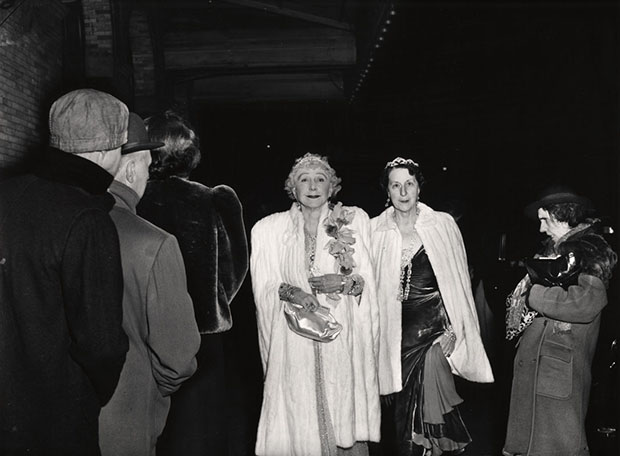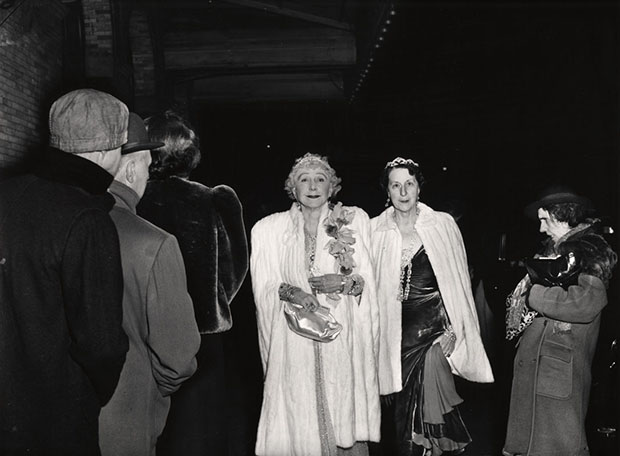

Weegee’s 1943 photo outside the Met Opera influenced street photography, film noir and tabloid subterfuge
The photograph, although revolutionary in itself, came into the world around the same time as a number of other extraordinary inventions. Electrification, the petrochemicals industry, the internal combustion engine, the radio and the telephone are often classed as products of the second industrial revolution, which ran from the nineteenth century into the early years of the twentieth, forming much of what we regard today as the modern world.
Arthur Fellig, the European émigré who photographed under the name of Weegee, began his career during the 1920s, just as this new world was hardening, and captured the look and feel of it in New York City, at a time when NYC supplanted London as the biggest city on the planet.
Beginning as a dark-room assistant, Fellig went on to work as freelance photographer, putting himself ahead of the competition by stationing himself at the city’s Police Headquarters, and grabbing hold of his camera whenever he caught news of a notable incident via that other recent technological innovation, the police teletype.
Weegee might have been an American tabloid photographer, yet his grittier images informed the look and feel of Hollywood film noir, while his preference for including rubber-necking passers-by in his shots helped develop a critical, democratic style of street photography, later taken further by the likes of Robert Frank, Joel Meyerowitz and William Klein. It’s Weegee’s onlookers as the New York Times’ Roberta Smith once wrote, “who mirror and encourage our own undisguised interest.”
The photographer’s most instructive observer is also the crucial participant in his most famous shot. Weegee took The Critic, on 22 November 1943, outside the Metropolitan Opera on the opening night of the season, when the arrival of two society ladies, Mrs George Washington Kavanaugh and Lady Decies, was undercut by the dishevelled stare of a less-refined citizen. Here’s how author Ian Jeffry puts it in our newly updated edition of The Photography Book:
“The two bejewelled ladies and the deranged bystander appear in ‘The Opera’, a section in Weegee’s renowned book Naked City of 1945. He said: ‘I couldn’t see what I was snapping but could almost smell the smugness.’ Someone stopped the pair in the foyer of the opera house and asked them if it was appropriate to wear so much jewellery ‘in these critical times’. The older woman apologised for wearing last year’s jewels, and added that she wore them to help morale.”
It’s an acid tale to go with an equally critical snapshot of high and low society. And yet, as later investigations have indicated, Weegee may well have staged the photograph. His assistant, Louis Liotta, went on to claim that he found the unnamed drunk on the Bowery and, on Weegee’s insistence, brought her up to the Metropolitan Opera House on Broadway, to help form this ‘documentary’ shot. A suggestion, perhaps, that Weegee pioneered other, less admirable tabloid practices that would also be adopted by a later generation of photographers.